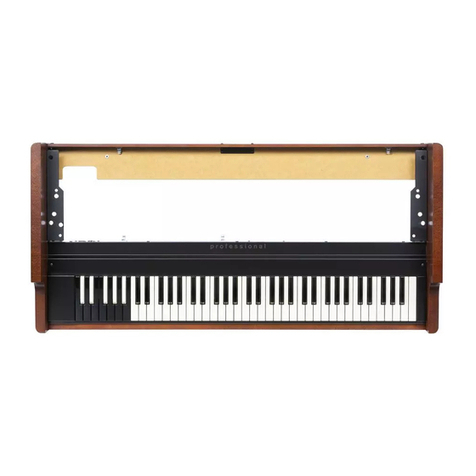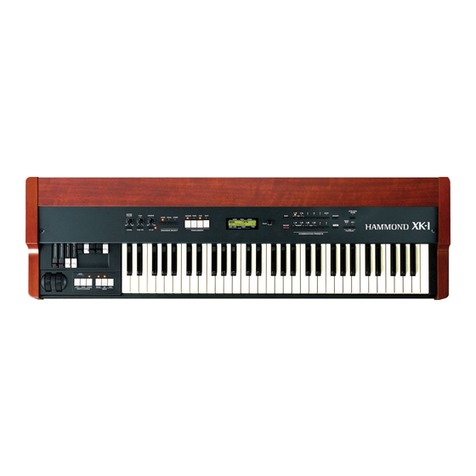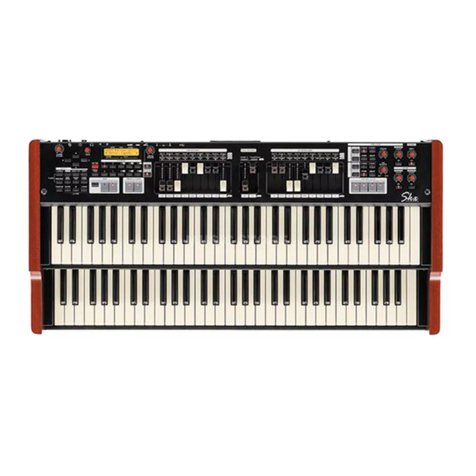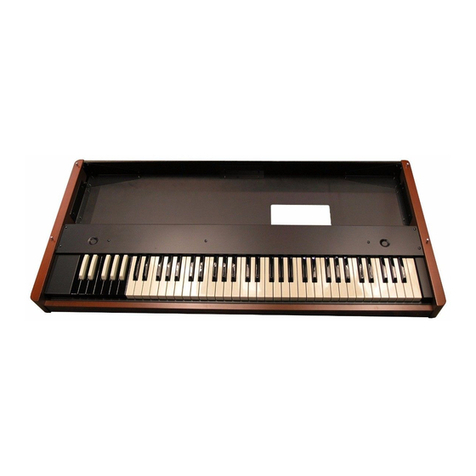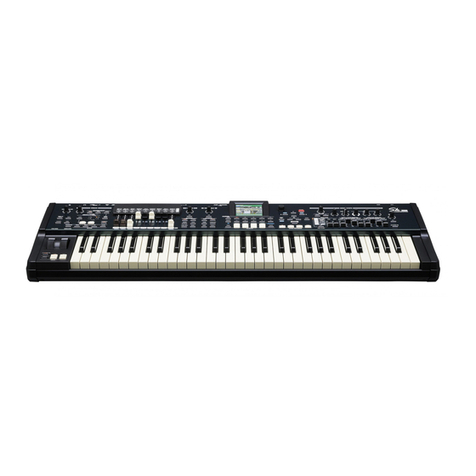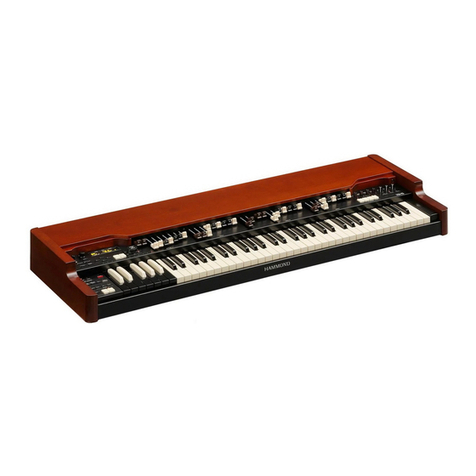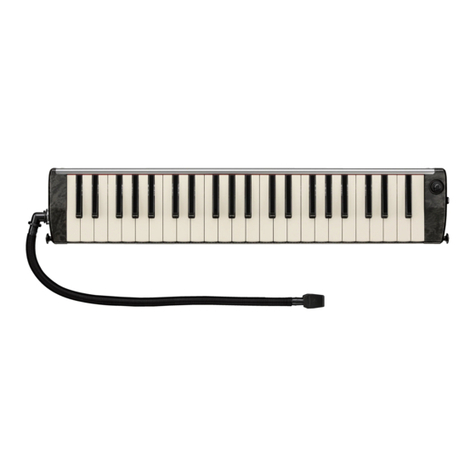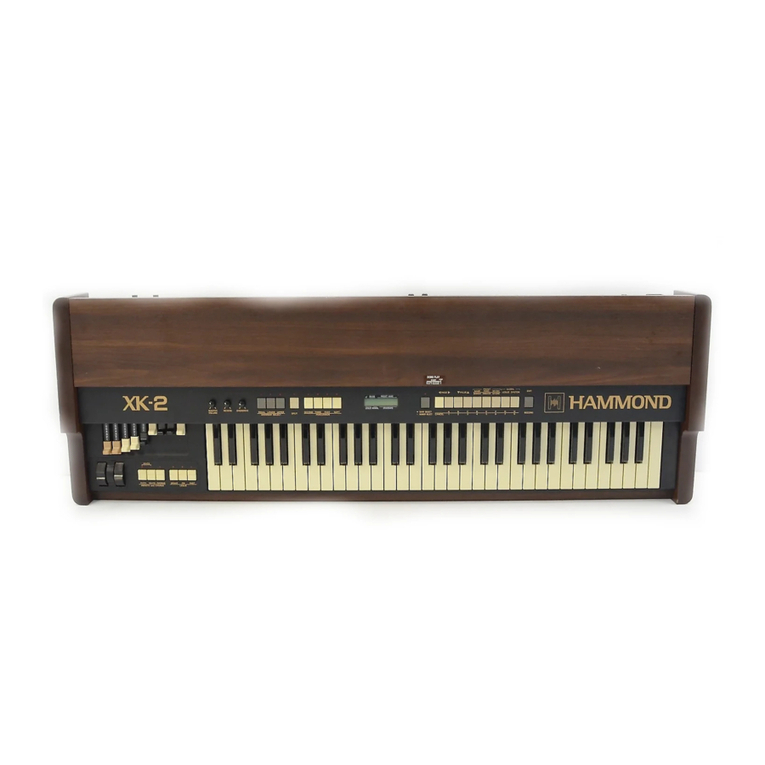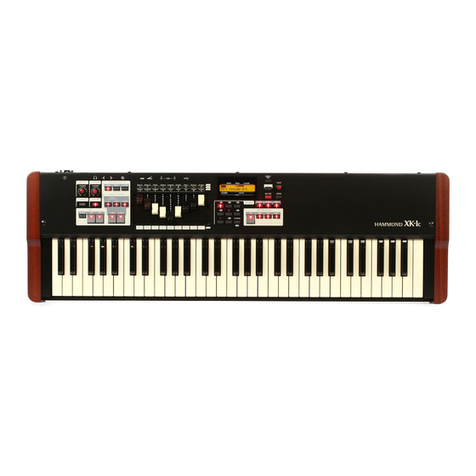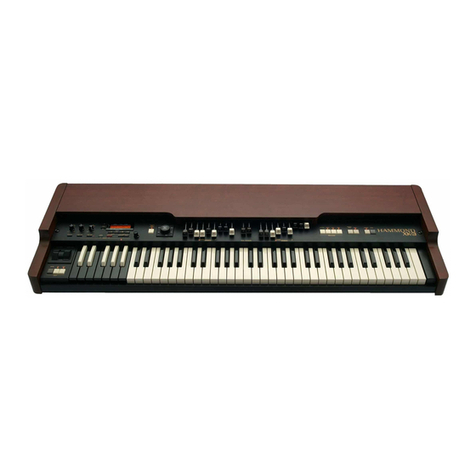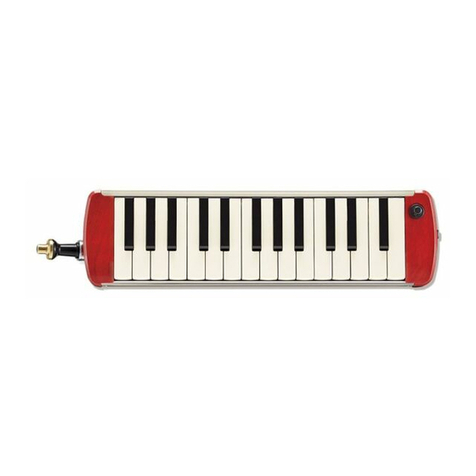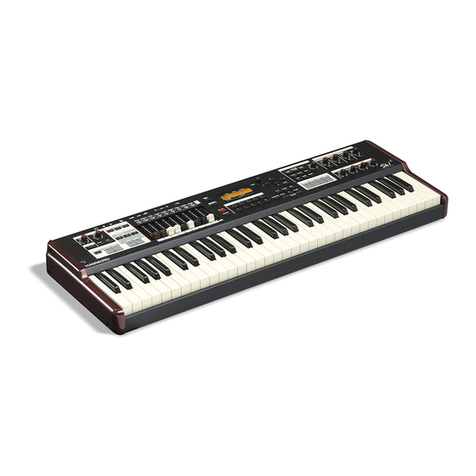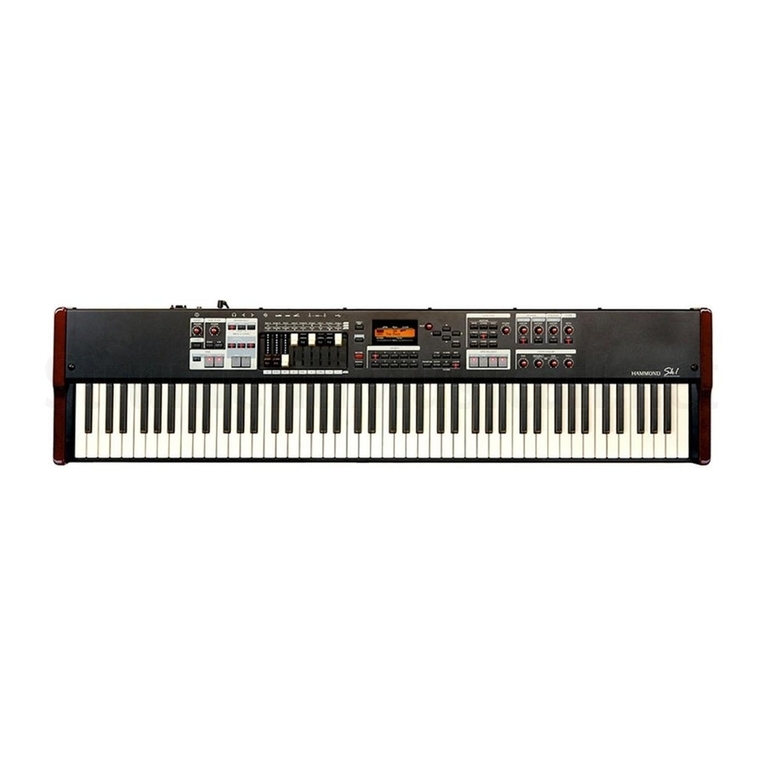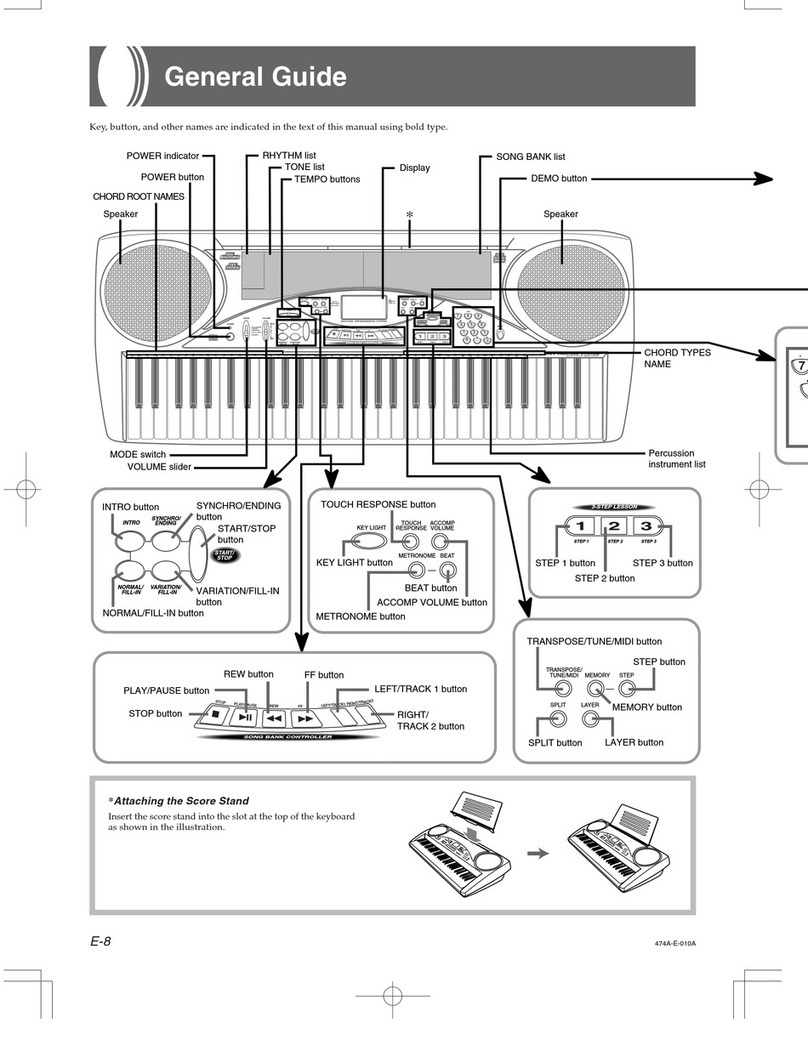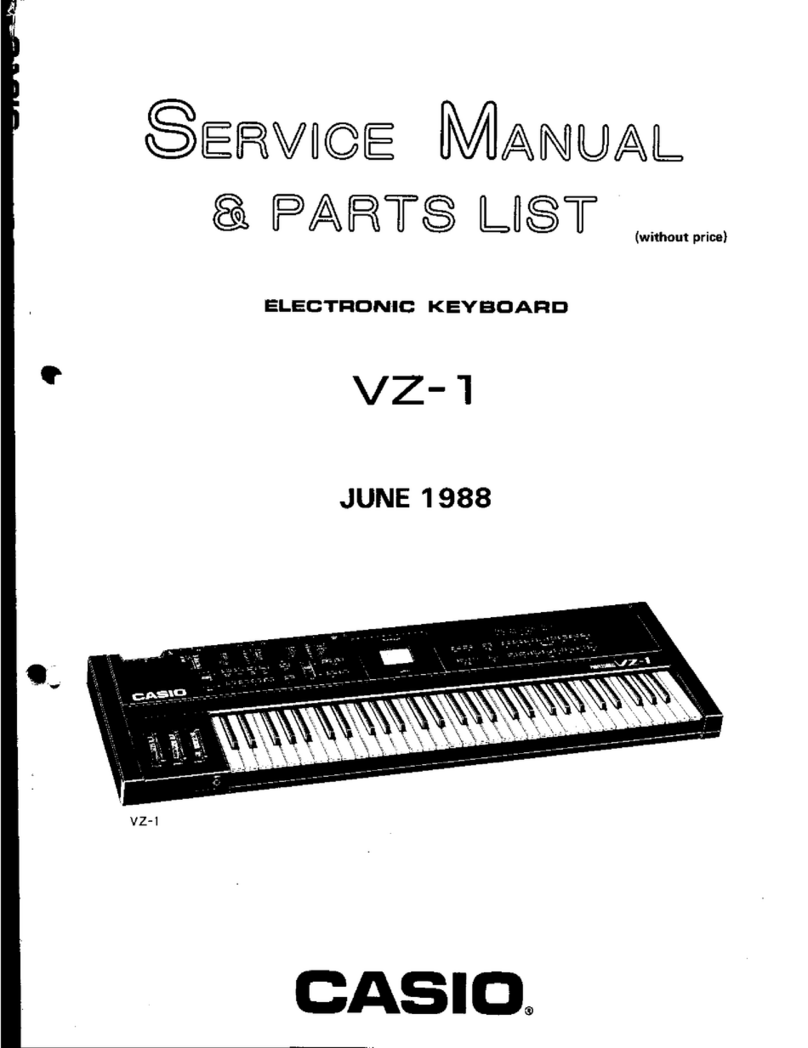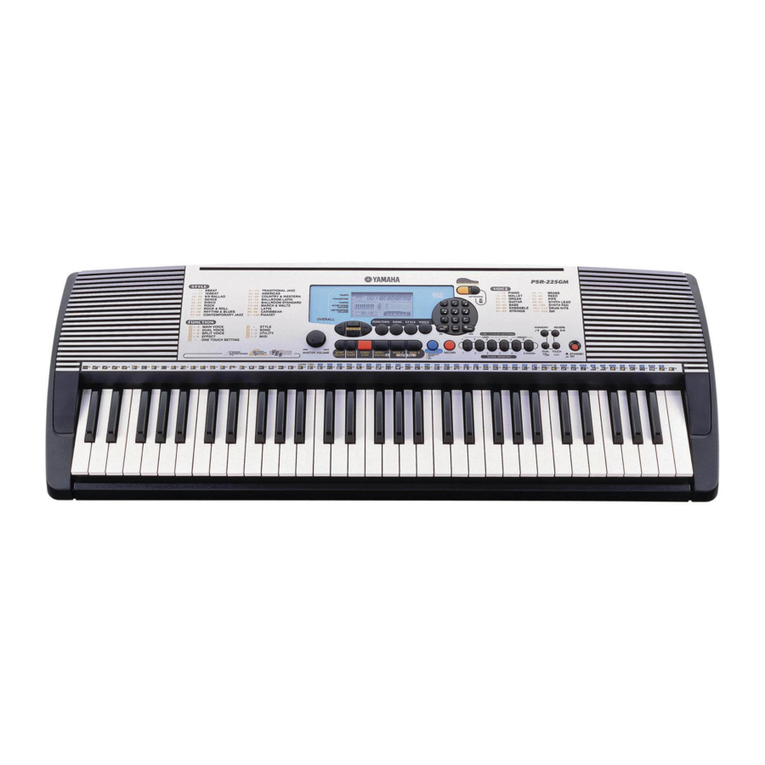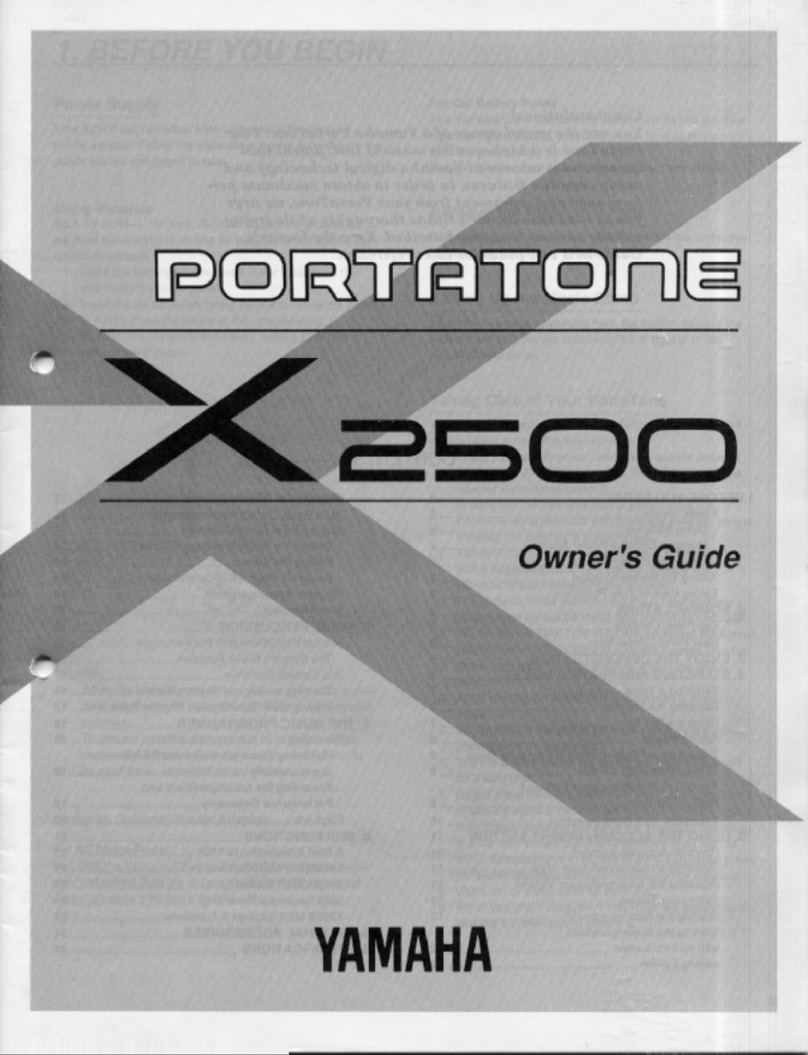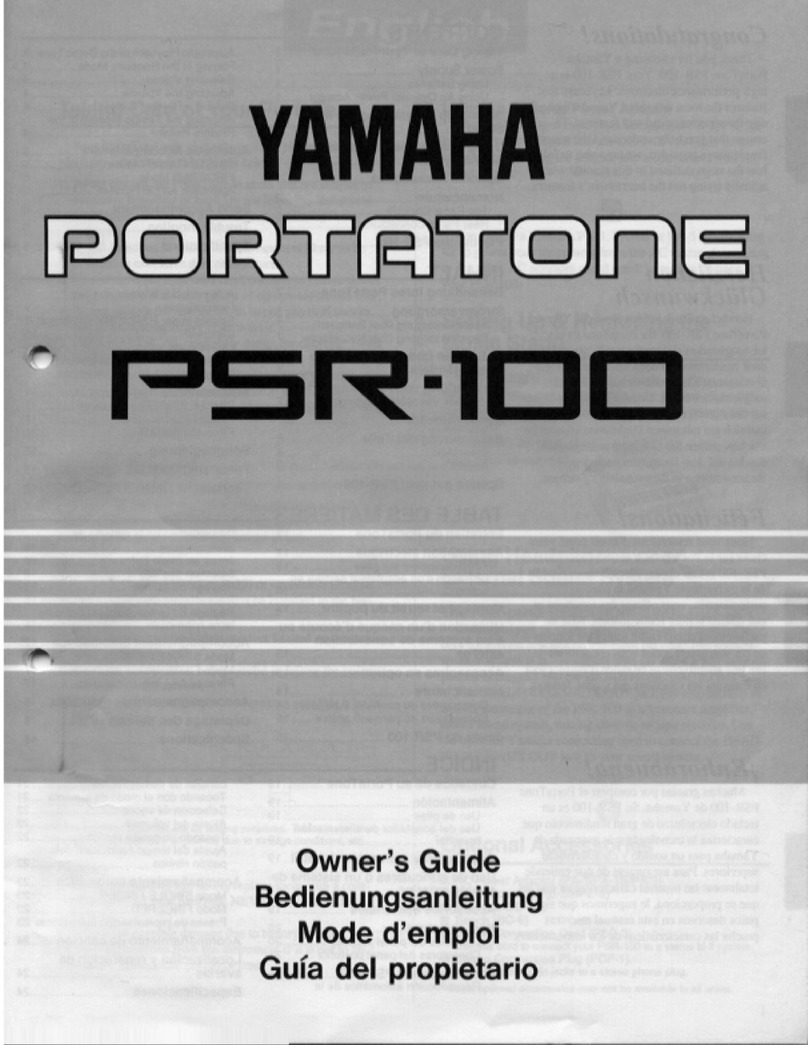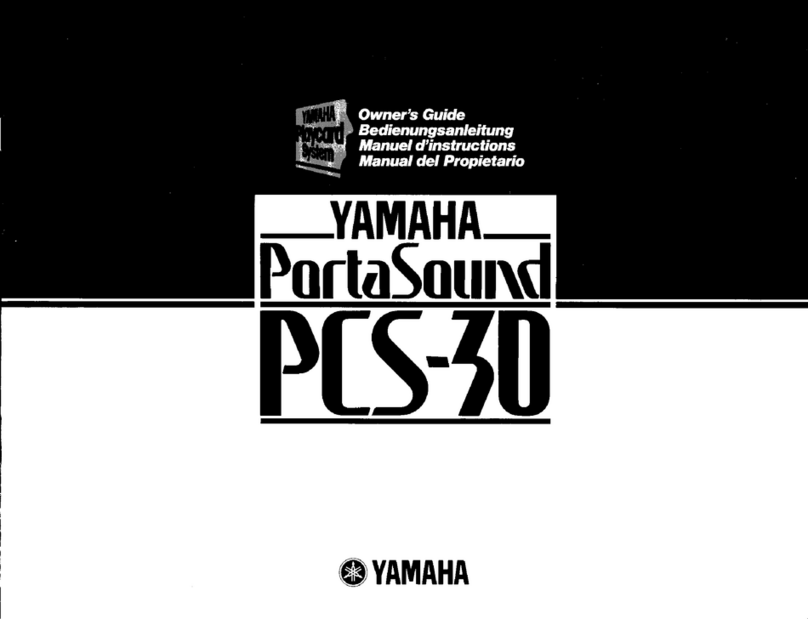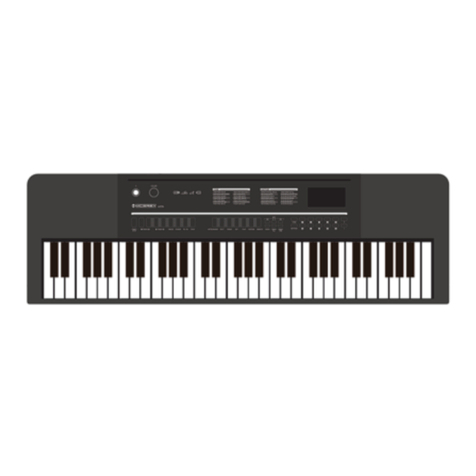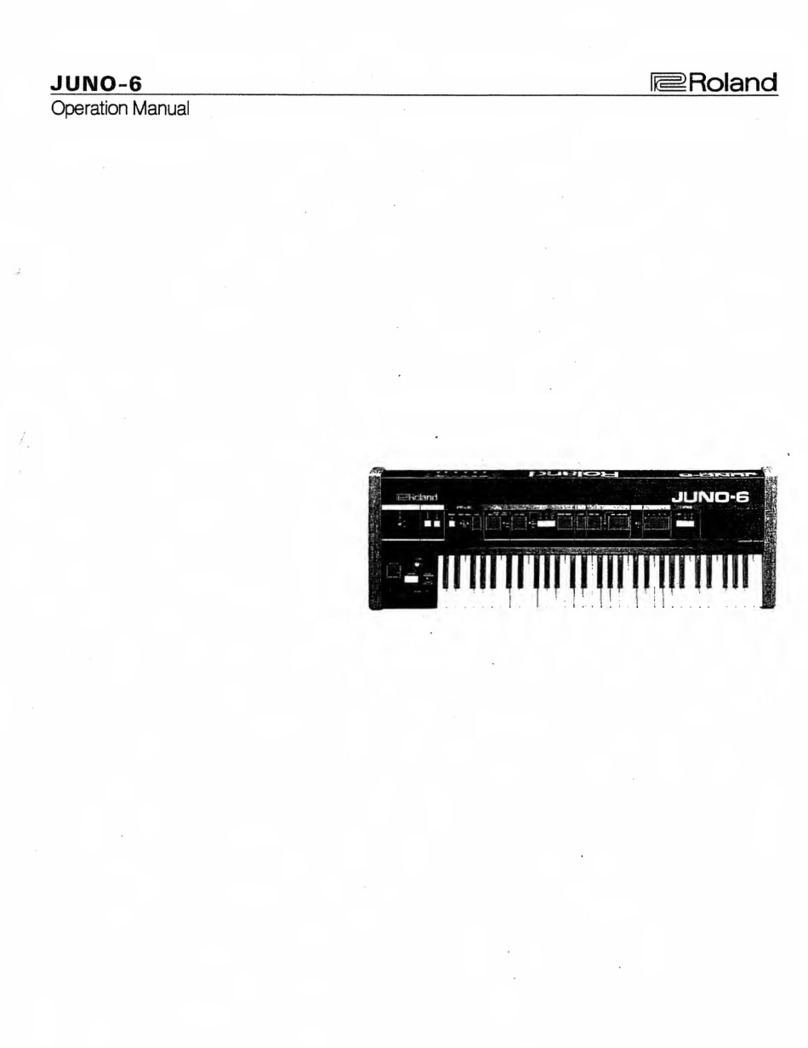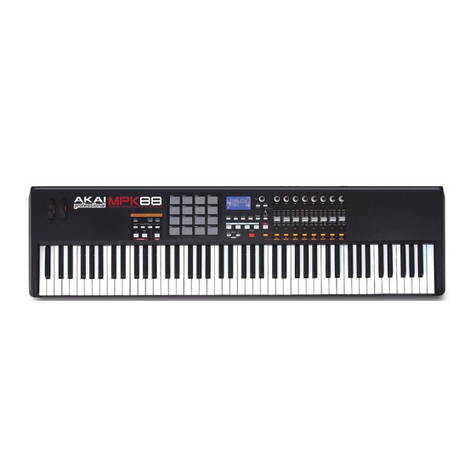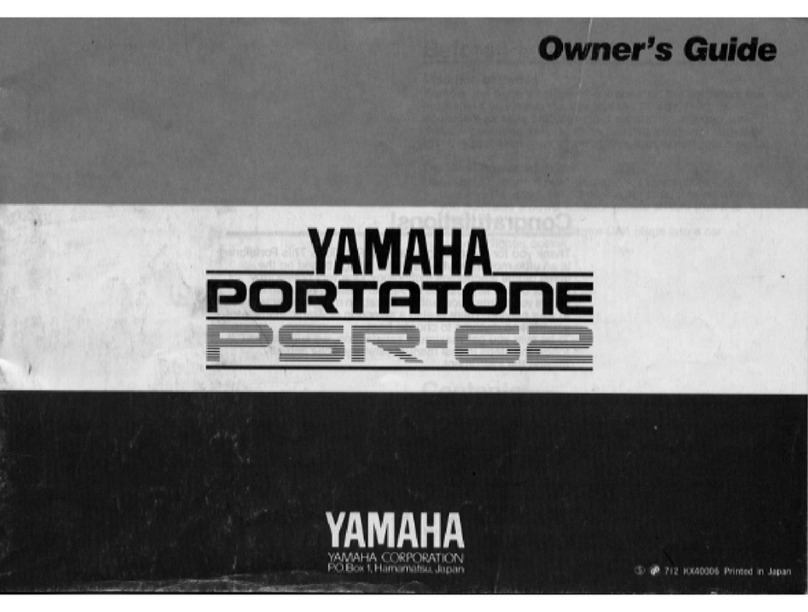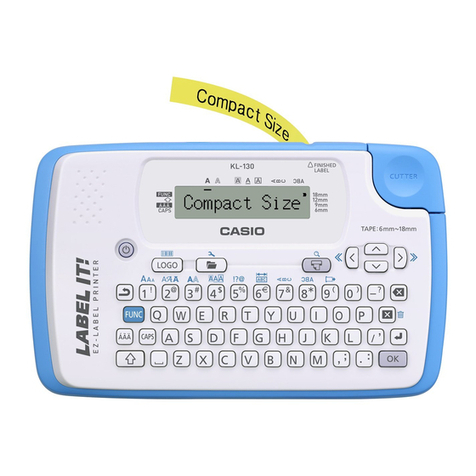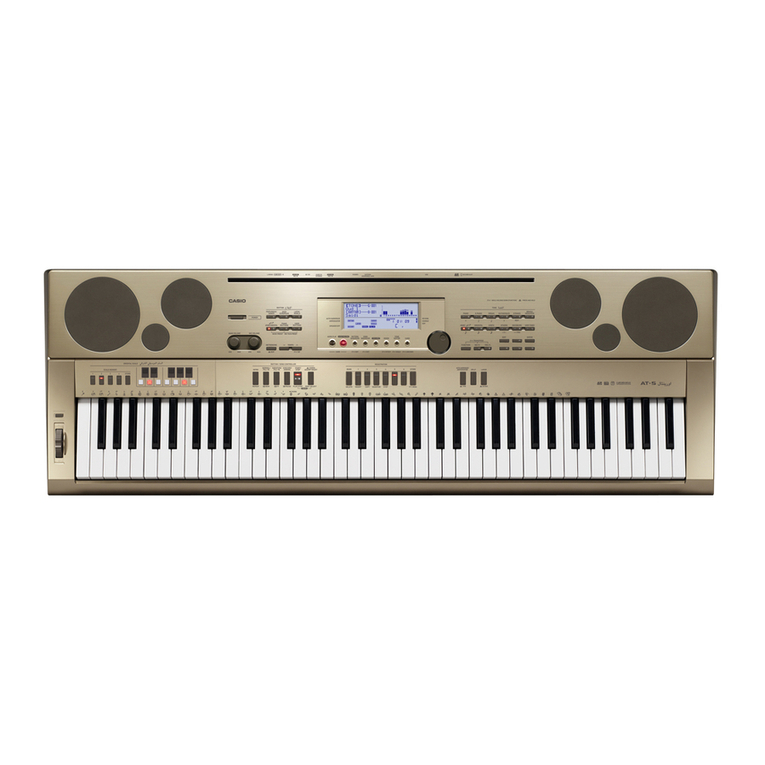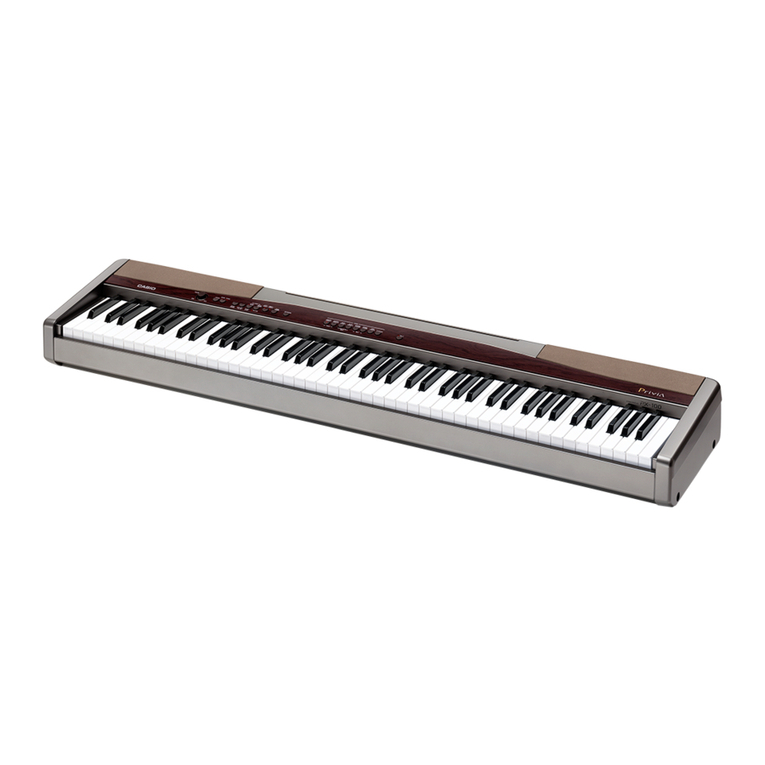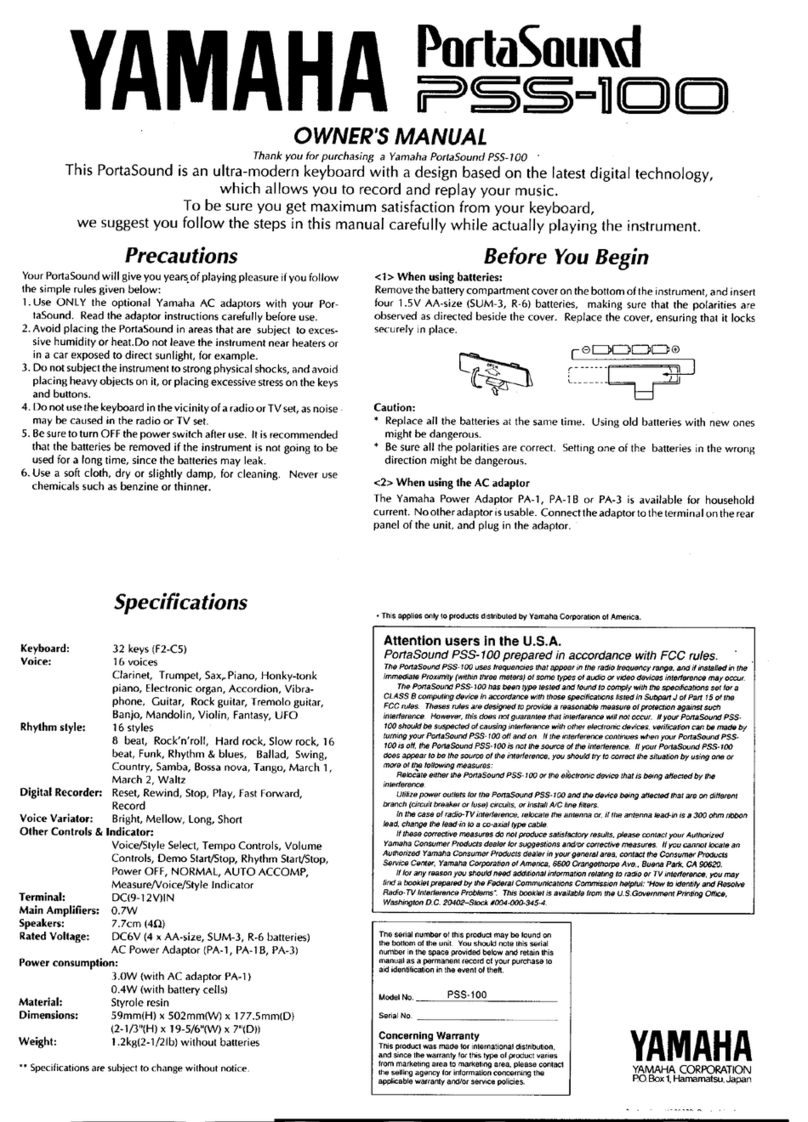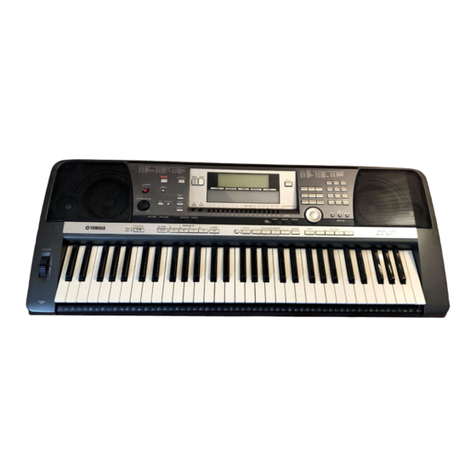
Introduction
SETTING THE PARAMETERS ................. 55
DRAWBAR .................................................................................... 56
Setting the Manual Part (LOWER and UPPER) ............................................. 56
Setting the PEDAL Part ................................................................................ 57
PRESET ........................................................................................ 58
PRESET NAME ............................................................................................ 58
PRESET LOAD ............................................................................................. 58
EFFECTIVE USE OF LINK-LOWER/PEDAL ............................................ 59
WHEN LINK LOWER/PEDAL IS ON: .............................................................. 59
WHEN LINK LOWER/PEDAL IS OFF: ............................................................. 59
ASSIGN......................................................................................... 60
CONTENTS OF ASSIGN TEMPLATES ........................................................... 60
CONTROL ..................................................................................... 62
DRAWBAR ................................................................................................... 62
PITCH BEND ................................................................................................ 62
MODULATION .............................................................................................. 63
EXPRESSION ............................................................................................... 64
FOOT SWITCH ............................................................................................. 64
USER ........................................................................................................... 65
DISPLAY ...................................................................................................... 65
THE EFFECTIVE USE OF THE CONTROL MODE .................................. 66
TUNE ............................................................................................ 67
CUSTOM TONEWHEELS ............................................................... 68
RECORD THE CUSTOM TONEWHEELS ............................................... 70
PERCUSS (PERCUSSion) ............................................................. 71
LESLIE .......................................................................................... 72
CABINET NUMBERS .................................................................................... 72
LESLIE PARAMETERS .................................................................................. 72
RECORD THE CABINETS .................................................................... 75
VIB&CHO (VIBrato and CHOrus) .................................................. 76
VIBRATO AND CHORUS OF HAMMOND ORGANS .............................. 77
OVERDRIV (OVERDRIVe) .............................................................. 78
BIAS VOLTAGE AND NONLINEAR DISTORTION ................................... 79
EQUALIZ (EQUALIZer) .................................................................. 80
REVERB ........................................................................................ 81
DEFAULT ....................................................................................... 82
SYSTEM ....................................................................................... 83
MIDI ........................................................... 85
MIDI ............................................................................................. 86
What is “MIDI”? .................................................................................. 86
MIDI TERMINALS ON THIS KEYBOARD .............................................. 86
WHAT THE MIDI CAN DO ON YOUR KEYBOARD................................. 86
MIDI STRUCTURE......................................................................... 88
EXPANDING THE KEYBOARD ....................................................... 89
RECORDING AND PLAYING THE PERFORMANCE ........................ 90
Recording to the Sequencer or the Computer .............................................. 90
Playback from the Sequencer or the Computer ............................................ 90
CONTROLLING THE EXTERNAL MIDI EQUIPMENTS .................... 91
ZONES .......................................................................................... 92
INTERNAL ZONE .......................................................................................... 92
EXTERNAL ZONE ......................................................................................... 93
MIDI ............................................................................................. 96
MIDI TEMPLATE .......................................................................................... 96
MASTER ...................................................................................................... 96
KEYBOARD CHANNEL ................................................................................. 97
SAVE THE SETUP .................................... 99
SAVE THE SETUP ....................................................................... 100
CF CARD YOU CAN USE ............................................................................ 100
CF CARD SLOT .......................................................................................... 100
THE CONTENT AND CAPACITY TO BE SAVED ............................................ 100
INITIALIZE THE CF CARD ........................................................... 101
OPERATE THE SETUP ................................................................. 102
HOW TO READ THE DISPLAY ........................................................... 102
SAVE THE SETUP ............................................................................. 102
CHANGE THE SETUP NAME ............................................................. 103
LOADING THE SETUP ....................................................................... 104
HOW TO DELETE THE SETUP ........................................................... 104
TROUBLE SHOOTING ........................... 105
TROUBLE SHOOTING ................................................................. 106
APPENDIX .............................................. 107
Custom Tone-wheel Templates .................................................. 108
MIDI Templates .......................................................................... 109
Part and MIDI Messages ............................................................ 111
MIDI Information ........................................................................ 112
Drawbar Data List 1 ................................................................... 113
Drawbar Data List 2 ................................................................... 113
System Exclusive Message ........................................................ 114
Global Parameters ..................................................................... 115
Preset Parameters ..................................................................... 116
Tone-wheel Parameters ............................................................. 119
Leslie Parameters ...................................................................... 120
System Parameters .................................................................... 120
Combi. and Bank/Program Messages ........................................ 121
Specifications ............................................................................ 122
Demonstration Songs and Composers ....................................... 123
Factory Presets .......................................................................... 124
SERVICE ..................................................................................... 125
IN THIS MANUAL:
NOTE:s and appear frequently.
The NOTE: is a supplementary explanation.
The are explanations of terms and applications.


